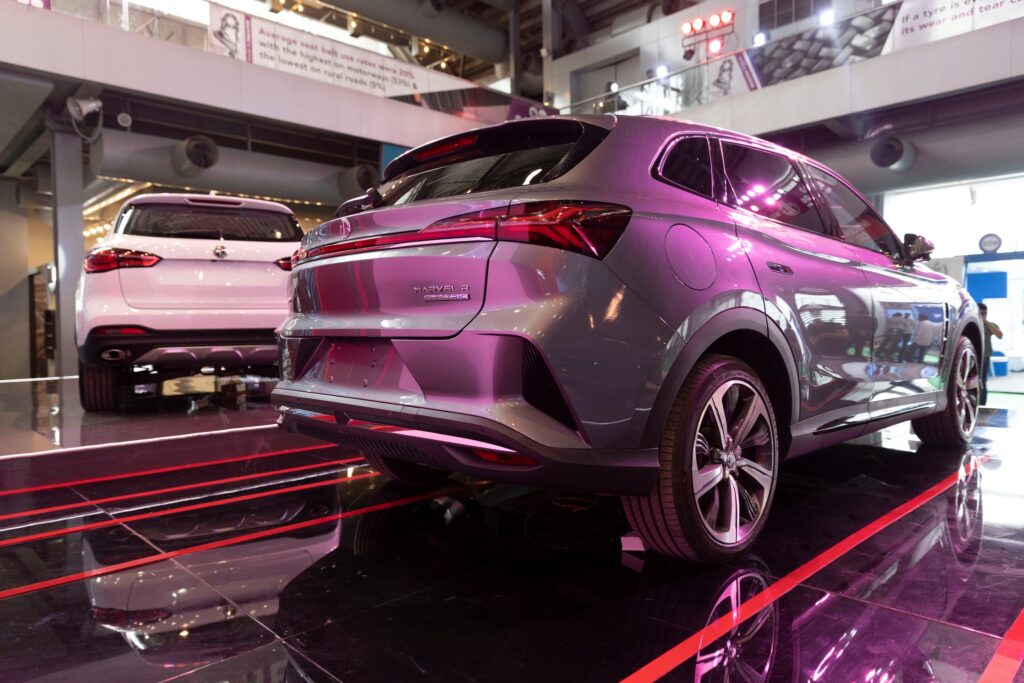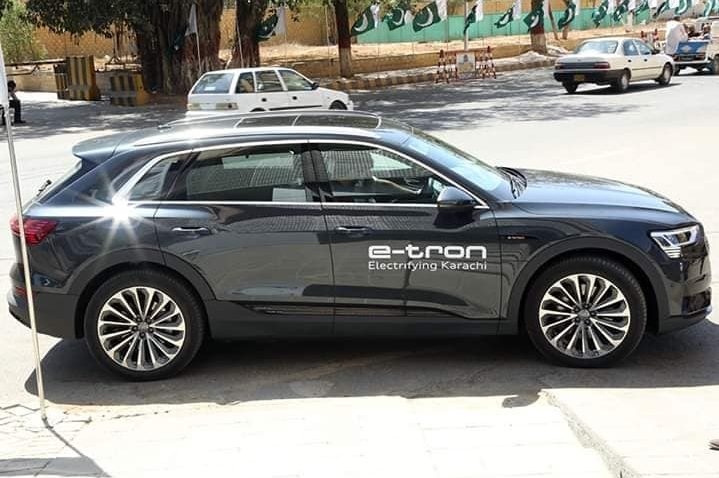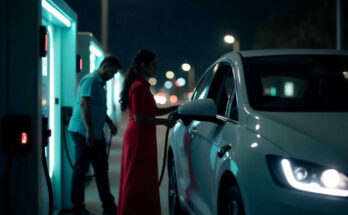In recent years, the global shift toward electric vehicles (EVs) has gained momentum due to growing environmental concerns and the push for sustainable energy solutions. Pakistan, too, has joined the global EV revolution, with the government expressing a strong commitment to promote electric mobility as part of its National Electric Vehicle Policy (NEVP).
However, the reality on the ground tells a very different story, as the majority of recently launched EVs in the country cater exclusively to the elite, with price tags far out of the reach of the average Pakistani consumer.
A Luxury for the Few
Over the last year, several high-end electric vehicles have entered the Pakistani market, targeting an exclusive niche of affluent buyers. These vehicles boast advanced technology, sleek designs, and top-tier performance but come at exorbitant prices—many of them priced well above Rs 1.5 crore. EVs like the Audi e-Tron, BMW iX3, and Porsche Taycan have graced Pakistani roads, but sales remain minimal, with barely a dozen units sold per month.

The high price point is not just a reflection of the technological advancements of these vehicles but also due to heavy import duties and taxes. As a result, these electric cars are essentially reserved for the elite, with little to no accessibility for the middle class or the masses.
Minimal Sales and Limited Market
Given the economic landscape in Pakistan, where the average income is far below what is required to afford such luxury, it’s no surprise that EV sales remain dismally low. The market for electric vehicles is so exclusive that even the few sales made each month are primarily driven by affluent individuals who are more interested in status symbols than environmental benefits.
Related: India Reveals New Electric Vehicle (EV) Policy
The lack of affordability is starkly highlighted when comparing EV adoption rates in Pakistan to those in other regions where EVs are rapidly becoming the norm due to affordable options and government incentives.
Lack of Charging Infrastructure
One of the most significant barriers to EV adoption in Pakistan is the almost non-existent charging infrastructure. Outside of a few major cities, charging stations are rare, and even in places like Karachi, Lahore, and Islamabad, the existing infrastructure is insufficient to support widespread EV use. Charging a luxury EV is not just an inconvenience due to the limited number of stations but is also a time-consuming process for those who don’t have access to home charging.

This infrastructure gap discourages potential EV buyers, as the fear of running out of battery with no convenient charging points looms large. For an average Pakistani, investing in an electric vehicle without a reliable charging network is a daunting proposition, making them stick to traditional fuel-powered vehicles.
The Power Supply Problem
Pakistan’s chronic power shortages and interrupted electricity supply further dampen the prospects of electric vehicles. Regular load-shedding and voltage fluctuations make it difficult for EV owners to rely on a consistent power source for charging their vehicles. This is compounded by soaring electricity prices, which have seen a steady rise over recent years.
Related: Dilemma of Having an EV in Pakistan
With electricity bills spiraling, many citizens are already struggling to manage basic utilities like air conditioning and even fans during hot summers. The idea of using expensive electricity to charge a luxury EV, which requires substantial amounts of power, is out of the question for most. The economic burden makes the dream of EV ownership even more distant, forcing the masses to stick with conventional vehicles.
Contradictions in Government’s EV Vision
The Pakistani government has voiced ambitious plans under its EV policy, aiming to convert 30% of vehicles on the road to electric by 2030. However, the practical implementation of this vision is riddled with challenges. While luxury EVs dominate the market, there are no viable affordable options for middle-class buyers who form the majority of the population.

This situation contrasts sharply with the government’s stated goal of reducing pollution, cutting fuel imports, and promoting sustainable transport. For EVs to contribute meaningfully to environmental goals, the majority of the population needs access to affordable electric vehicles. Yet, with the current crop of high-end luxury EVs and the lack of a supportive ecosystem, the vision appears out of sync with reality.
Related: Expensive EVs in Pakistan: Barriers to Widespread Adoption
Moreover, without substantial investment in infrastructure development, energy reforms, and price control measures, it is highly unlikely that Pakistan will see the widespread adoption of electric vehicles that the government envisions. A focus on affordability, energy sustainability, and practical solutions for infrastructure is critical if the government truly wants to push for EV adoption in Pakistan.

The influx of expensive electric vehicles in Pakistan serves as a stark reminder of the growing gap between the elite and the masses. While the government pushes for the widespread adoption of EVs, the practical realities on the ground make it clear that electric mobility in Pakistan is currently a luxury only a few can afford.
Related: Are Electric Cars Viable for Pakistani Consumers?
With minimal sales, a lack of infrastructure, and rising electricity costs, the dream of an electric vehicle revolution seems far from achievable unless serious steps are taken to make EVs accessible to the average Pakistani. Without affordable EV options and improvements to the power supply and charging network, the country’s transition to electric vehicles remains a distant goal, far removed from the realities of everyday life for the masses.

A computer animation professional with over 23 years of industry experience having served in leading organizations, TV channels & production facilities in Pakistan. An avid car enthusiast and petrolhead with an affection to deliver quality content to help shape opinions. Formerly written for PakWheels as well as major publications including Dawn. Founder of CarSpiritPK.com




